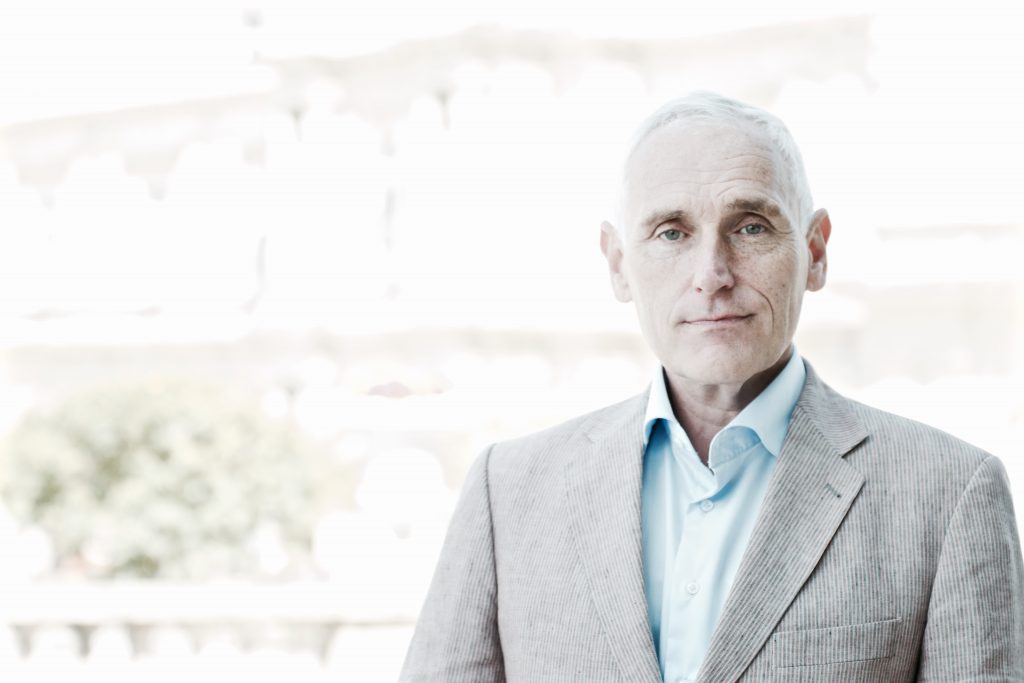Stel je voor dat er vandaag de dag een klein, opvallend gekleed mannetje in een luchtballon door Parijs zou vliegen of een een rondje om de Eiffeltoren. Luchtvaartpionier Alberto Santos-Dumont deed het, en droomde ervan dat iederéén op een dag een eigen luchtballon zou hebben. In zijn nieuwe historische roman De gevleugelde wekt Arthur Japin de kleurrijke Braziliaanse uitvinder weer tot leven.
Arthur Japin – De gevleugelde (320 p.). De Arbeiderspers, €21,99.
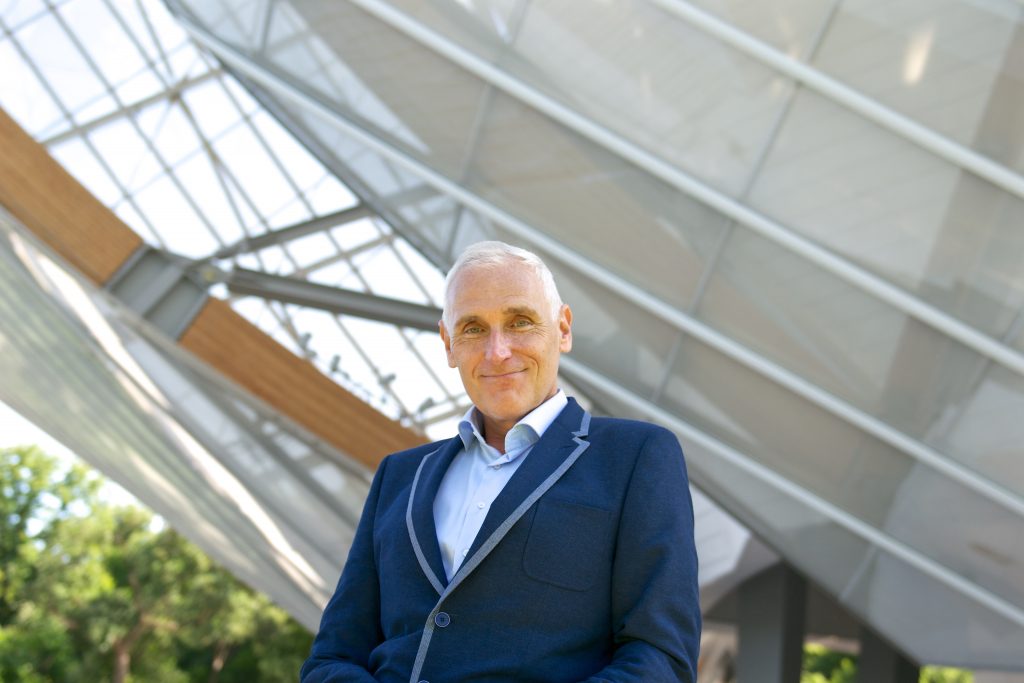
De mens… vliegt
‘Neem de wereld niet zoals hij is, maar bewerk hem tot wat hij zou moeten zijn.’ Het zou het levensmotto van schrijver Arthur Japin kunnen zijn, deze zin uit zijn nieuwe historische roman De gevleugelde. Onverwacht bleek hoofdpersoon Alberto Santos-Dumont grote verwantschap te hebben met de schrijver zelf en de hoofdpersonen uit zijn eerdere romans. ‘Mijn personages zijn vaak mensen die niet in de wereld passen. Mensen die van hun zwakte hun kracht hebben weten te maken. Daar ben ik zo benieuwd naar: waar vind je de kracht om te overleven?’ Arthur Japin valt even stil en denkt na hoe zijn romanfiguur Alberto Santos-Dumont te omschrijven. Een gevoelig iemand, die pijn en energieën van anderen voelde, en daarom liever op een afstandje bleef. Die veel van mensen hield, maar hen niet begreep, en zij hem niet. ‘Alberto was klein, niet knap, verlegen. In gezelschap probeerde hij onzichtbaar te zijn. Altijd dacht hij: ik moet de lucht in, loskomen van de aarde.’
Het indrukwekkende museum Fondation Louis Vuitton in het Bois de Boulogne, het grote stadspark van Parijs, doet denken aan een prent in een avonturenboek van Jules Verne: een beeld van een schip met opbollende zeilen dat de wolken doorklieft. De tekening maakte indruk op Alberto, die als kind Vernes boeken stuklas, en hij geloofde wat hij las en zag, omdat er niemand was die hem vertelde dat de verhalen verzonnen waren.
Aan de Braziliaanse hemel kwamen altijd wel vogels voorbij, en Alberto kon urenlang naar boven liggen turen, verlangend naar de eenzaamheid en vrijheid van de gevleugelde wezens. De kinderen vermaakten zich met het spelletje ‘de duif vliegt’, waarbij iemand steeds een ander dier riep en de andere kinderen ‘vliegt!’ of ‘vliegt niet!’ moesten roepen. Bij ‘de mens’ was Alberto altijd de enige die riep: ‘Vliegt!’
De dromerigheid van de jonge Alberto ging gepaard met een groot technisch inzicht. Vader Henrique Dumont bestierde de grootste koffieplantage ter wereld, die zou uitgroeien tot wat nu de miljoenenstad Sao Paulo is. Alberto hield zich al op jonge leeftijd bezig met het onderhoud en de reparatie van de machines, intussen dromend van luchtballonnen en vliegtoestellen. Toen zijn vader stierf, liet die hem een vermogen achter. Hij zei tegen zijn zoon: ‘Doe wat je doen moet. Jij hoeft je geen zorgen te maken over je levensonderhoud, geen dag, nooit. Dat is mijn geschenk aan jou. Jij zult volledig vrij zijn om je ideeën te laten rijpen, te testen en uit te voeren.’ Dat was niet aan dovemansoren gericht: achttien jaar jong, schatrijk en vol met idealen, doorzettingsvermogen en moed toog Alberto aan het werk om zijn dromen te verwezenlijken. In Parijs welteverstaan, de stad die voor zijn vader symbool stond voor kennis en vooruitgang.

Japin herkent zichzelf in die wens een droomwereld te creëren. Als kind en tiener werd hij gepest en thuis geestelijk en lichamelijk mishandeld; fantasie werd een middel om te overleven. Hoewel hij ze er niet op uitzoekt, blijken zijn personages telkens ook figuren die pogen te ontsnappen aan de realiteit van alledag. ‘Voor Alberto’s vader was Parijs zijn alternatieve werkelijkheid, voor zijn moeder was dat het geloof. Alberto vond zijn droomwereld in de lucht. Hij hoorde er niet bij, mócht er ook niet bij horen, dus hij moest wel iets anders. Hoe overleef je? Dat is eigenlijk elke keer weer de vraag. Waar vind je de kracht om vanuit je buitenstaanderschap iets te doen wat niemand anders doet? Misschien is het omdat zulke mensen minder te verliezen hebben dat ze stappen durven nemen die niemand anders durft te zetten.’

De dirigible
De eerste vlucht die Santos-Dumont maakte, samen met twee ballonbouwers, liep bijna fataal af. Ze stortten neer nabij kasteel de Ferrières van baron Alphonse de Rothschild, maar werden nog net op het nippertje de lucht in geholpen door diens stalknecht Albert Chapin. Chapin trad in dienst bij Alberto als mecanicien en de twee werden onafscheidelijk, in hun werk maar vermoedelijk ook als minnaars. Samen sleutelden ze aan een ontwerp voor ’s werelds eerste bestuurbare ballon, een dirigible. Want vliegen was niet zozeer het probleem; het was alleen tot dan toe niet mogelijk de ballon te besturen, waardoor deze aan de wind was overgeleverd.
‘Albert en Alberto maakten een ballon van zijde,’ vertelt Japin en hij spreidt zijn armen uit. ‘Die eerste, met gas gevulde ballon is hier opgestegen, in de Jardin d’Acclimatation van baron de Rothschild op 20 september 1898. Toegejuichd door duizenden draaide Alberto rondjes. In zijn enthousiasme raakte hij overmoedig. Alberto had geen rem en ging altijd te ver. Hij vloog westwaarts, over de Allée de Longchamps, in de richting van de paardenracebaan aan de andere kant van de rivier. Dat het misging, was van hieruit niet meteen met het blote oog te zien. Hij liet de ballon te hoog stijgen, en de sigaarvormige ballon klapte dubbel.’
Alberto stortte neer – zoals zo vaak trouwens: hij ontsnapte tijdens zijn leven vele malen aan de dood. Dat leverde niet alleen levensgevaarlijke, maar soms ook hilarische situaties op. Toen Santos-Dumont eens in een kastanje was geland in de tuin van de Rothschilds, kreeg hij in de boom een fles champagne en een warme lunch geserveerd. Ook sloeg hij naar binnen in een klassiek gebouw bij Pont Bir-Hakeim. ‘Toen hij bijkwam, bungelde hij ondersteboven aan de touwen tegen de gevel, twintig meter boven de grond. Alberto was geen roker, maar toen hem vanaf het dak een sigaretje werd toegeworpen, stak hij er toch maar eentje op.’
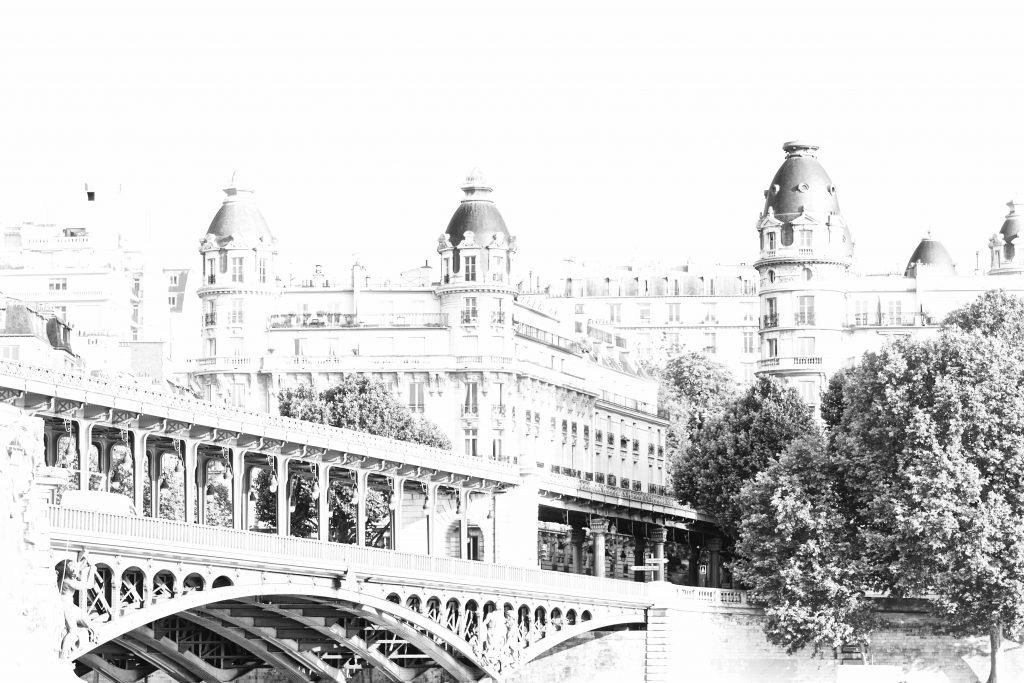
Ieder zijn eigen (zak)ballon
Het was Alberto’s droom dat iederéén op een gegeven moment zijn eigen ballon zou hebben om mee te reizen, als een automobiel. Liefst eentje die je kon opvouwen en in je tas kon meenemen. Zelf vloog hij met zijn ballon door Parijs, om boodschappen te doen, naar zijn werkplaats te gaan of te gaan dineren met Albert en vrienden als sieraadontwerper Louis Cartier en actrice Sarah Bernhardt.
In het Parijs van de belle époque heerste een opgewonden stemming over de technologische vooruitgang, de moderne tijd en natuurlijk de Wereldtentoonstelling van 1901. Van het Grand Palais tot aan de Jardins du Trocadero waren paviljoenen ingericht.
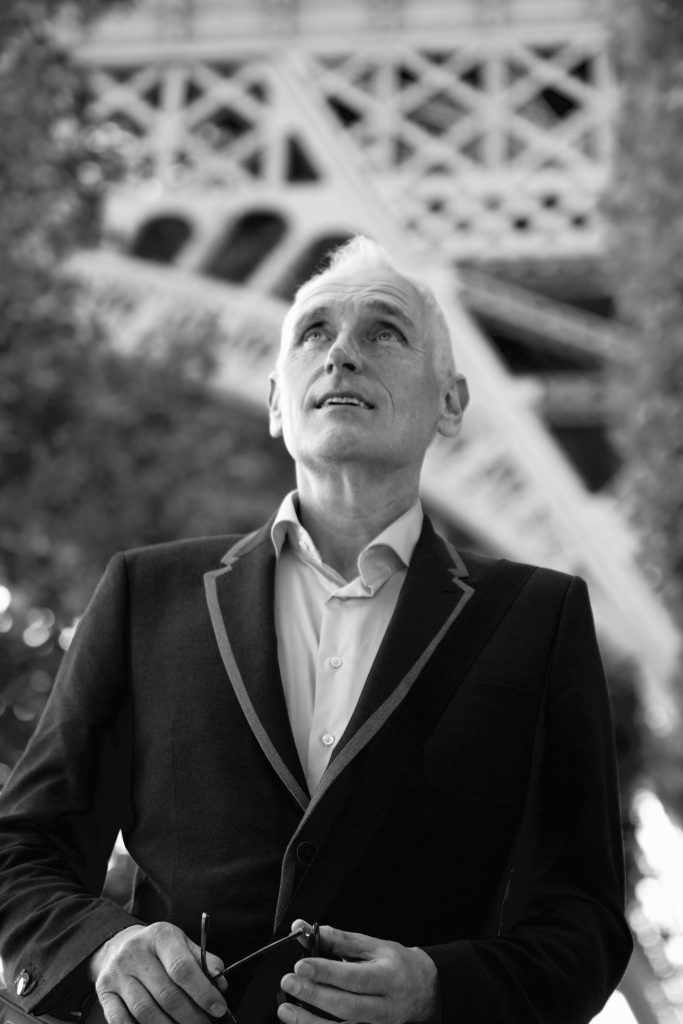
Gek genoeg was er geen plek voor de luchtvaart. Dat liet Santos-Dumont niet op zich zitten: hij steeg op en cirkelde tot verbijstering van tout Parijs een rondje om de Eiffeltoren. Japin: ‘Hij vloog over de paviljoens van Rusland, Cambodja en Congo en dacht: zo moet het straks zijn, dat je van het ene land naar het andere vliegt. Hij geloofde werkelijk dat vliegen een bijdrage zou leveren aan wereldvrede.’
Arthur Japin werpt vanaf de Eiffeltoren een blik omlaag, alsof hij de paviljoens nog ziet liggen. ‘Er vielen die dag vier mensen in de Seine, omdat ze naar boven keken en niet zagen waar ze liepen.’
Alberto Santos-Dumont groeide uit tot een fenomeen: verguisd en geliefd om zijn feminiene uiterlijk, zijn liefde voor juwelen en naai-en breiwerkjes; zijn panamahoeden, sportjasjes, witte boorden, dasspelden en stofbrillen bepaalden de mode; zijn beeltenis werd vastgelegd in gemberkoekjes, lolly’s en chocola.
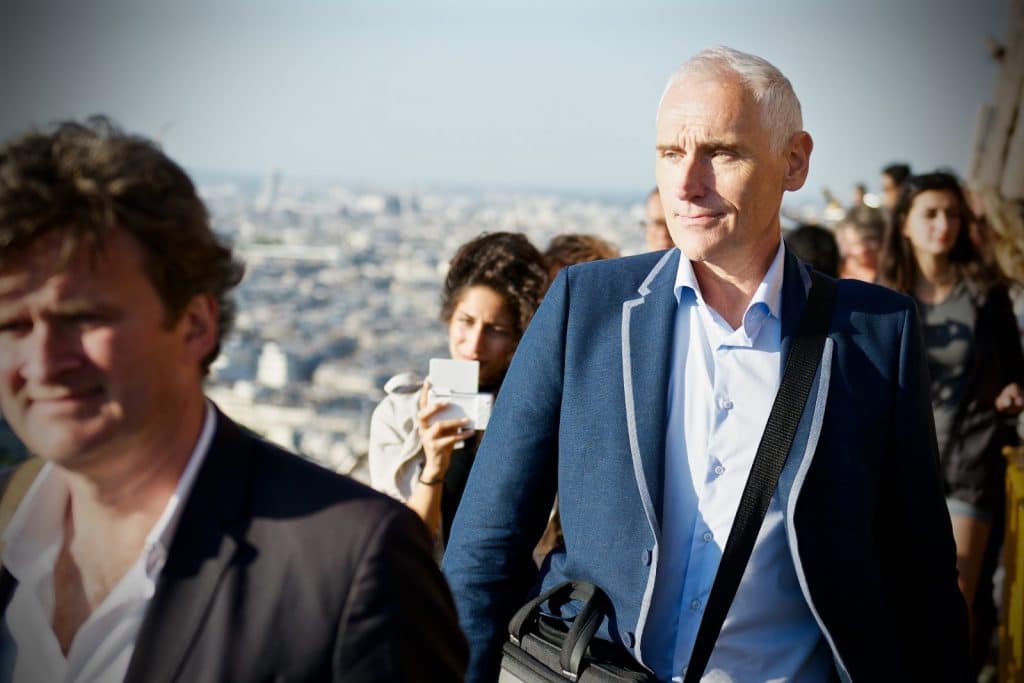
Catastrofe
Alberto’s wens vliegen mogelijk te maken voor de gewone man probeerde hij onder meer te verwezenlijken door middel van een vliegrace. Hoewel hij die zelf had bedacht en er ook aan meedeed, hoopte Santos-Dumont dat het anderen ertoe zou aanzetten zelf ook aan de slag te gaan met ontwerpen en bouwen. De race ging van Saint-Cloud naar Champs-de-Mars en terug. Aan deze gelegenheid danken we het polshorloge. Alberto had namelijk een probleem: hij had beide handen nodig voor de besturing van de ballon en kon daardoor niet bij zijn zakhorloge om de tijd te checken. Zijn vriend Louis Cartier bedacht een oplossing: de Santos, het allereerste polshorloge. Uiteindelijk won Alberto zelf de race, maar niet nadat de juryleden hadden geprobeerd hem ten onrechte te diskwalificeren.
Santos-Dumont was mogelijk ook degene die het eerste vliegtuig bouwde en er een paar honderd meter in vloog; toen dat nieuws doordrong tot Amerika claimden de gebroeders Wright dat al twee jaar eerder te hebben gedaan, hoewel daar geen geen bewijs voor bestond. Vanaf dat moment nam de ontwikkeling van het vliegtuig en de luchtvaart opnieuw een enorme vlucht.
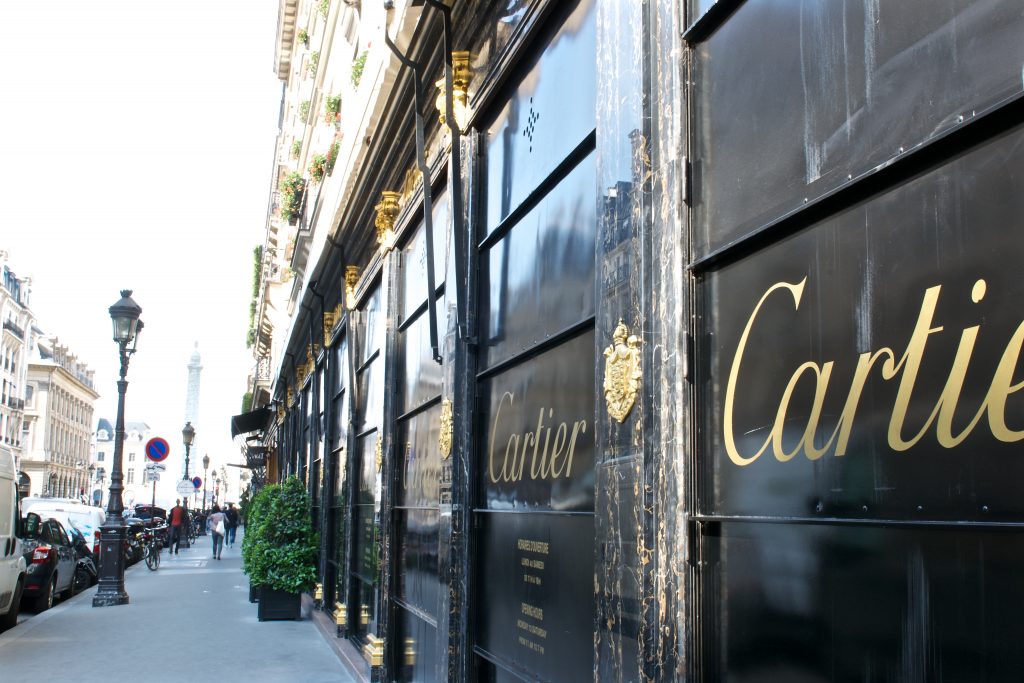
Het liep echter jammerlijk anders dan Alberto Santos-Dumont zich altijd had voorgesteld. De Eerste Wereldoorlog brak uit, en in plaats van een bijdrage te leveren aan wereldvrede werd zijn geliefde vliegtuig ingezet als oorlogswapen. ‘Hij maakte een tocht langs allerlei staatshoofden om ze te smeken het vliegtuig niet te gebruiken,’ vertelt Arthur Japin, ‘maar tevergeefs. Het maakte hem erg overstuur en hij vernietigte al zijn ontwerpen. Na 1918 hield hij zich niet meer bezig met de luchtvaart, al bleef hij wel dingen uitvinden; zo bedacht hij gemotoriseerde ski’s waarmee je bergopwaarts kon skieën. Altijd omhoog. Maar hij was zo overspannen van de oorlog dat hij in een kliniek in Sankt Moritz terechtkwam.’
Santos-Dumont keerde terug naar Brazilië, per boot. Japin: ‘Hij kwam aan in Rio de Janeiro en alle grote kunstenaars en denkers wilden hem begroeten. Ze stapten in een grote dirigible en stegen op. Santos-Dumont keek omhoog, zwaaide en zag ze allemaal naar één kant hellen om confetti over hem uit te strooien. Ze kantelden en de ballon vatte vlam en ontplofte. Voor zijn ogen stierf de hele fine fleur van Brazilië.’
Alberto kwam er nooit meer overheen, en uiteindelijk maakte hij in 1932 een einde aan zijn leven. Voor het laatst zweefde zijn lichaam boven de grond.
‘Hij werd afgelegd door een dokter die tegen het regime van president Getúlio Vargas was en niet wilde dat de dictator goede sier met de nationale held ging maken; Vargas was namelijk van plan Santos-Dumont een grote staatsbegrafenis te geven en zo mee te liften op diens populariteit. In een impulsieve daad haalde de dokter Alberto’s hart eruit – een verrassend groot hart voor iemand van zijn postuur. Op dit moment bevindt het zich in op een militair vliegveld in Rio, in een prachtige bokaal die het zuidelijk halfrond voorstelt. Door de sterretjes heen kun je het hart zien.’
En zo werd Santos-Dumont ter aarde besteld zonder zijn hart, dat altijd maar vliegen wilde. Bij de begrafenis bracht de voltallige Braziliaanse luchtmacht Alberto de vliegeniersgroet. Die avond werden alle lichten op de Eiffeltoren gedoofd.
